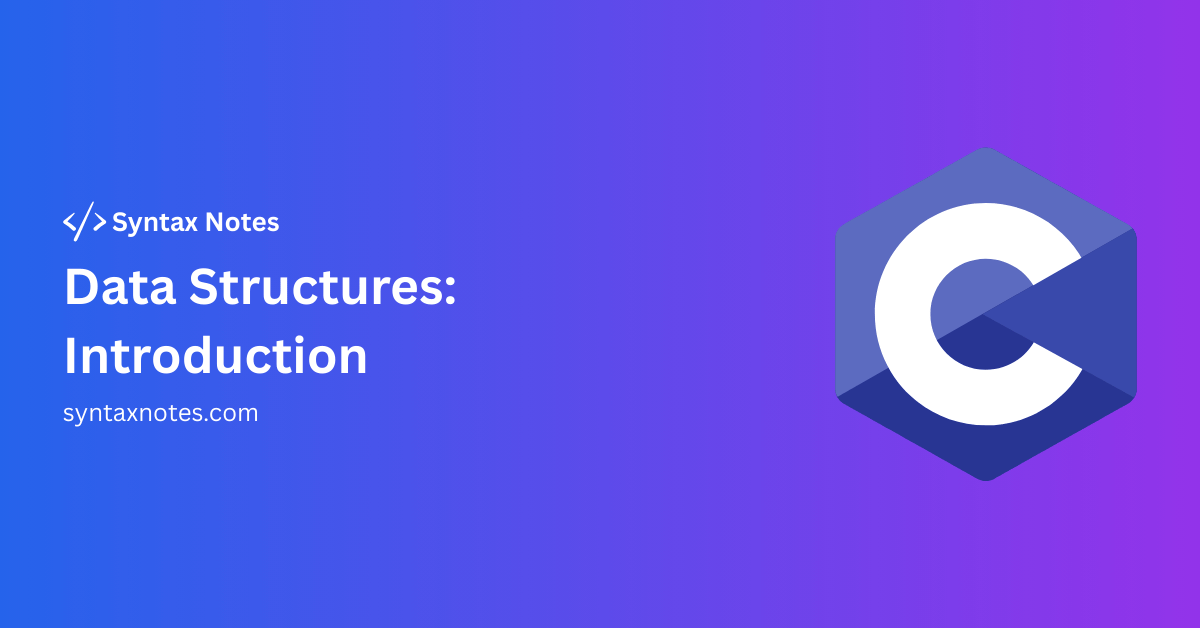Table of Contents
Summary
- Data structures play a critical role in organizing and managing data efficiently.
- Linear and non-linear structures have different characteristics and applications.
- Operations such as insertion, deletion, searching, and sorting are fundamental to working with any data structure.
- Understanding the strengths and limitations of each data structure helps in making the right choice for specific applications.
1. What is a Data Structure?
A Data Structure is a method of organizing, storing, and managing data efficiently so that operations such as insertion, deletion, and retrieval can be performed effectively.
For example, think of a library where books are arranged in a systematic manner. If the books are arranged properly, finding, adding, or removing a book becomes easier. Similarly, data structures organize data in a way that optimizes various operations.
2. Importance of Data Structures
Data structures play a vital role in computer science for the following reasons:
- They help manage large volumes of data efficiently.
- They allow faster searching, sorting, and modification of data.
- They optimize memory usage and processing time.
- They facilitate the design of efficient algorithms.
3. Types of Data Structures
Data structures are mainly classified into two categories:
1. Linear Data Structures
In linear data structures, data is stored sequentially, one after the other.
-
Array:
- A fixed-size collection of elements stored in contiguous memory locations.
- Elements can be accessed using an index.
- Example:
arr[5] = {10, 20, 30, 40, 50} - Suitable for fast data access but has a fixed size.
-
Linked List:
- A sequence of nodes where each node stores data and a pointer to the next node.
- Types:
- Singly Linked List: Nodes point only to the next node.
- Doubly Linked List: Nodes point to both the next and previous nodes.
- Circular Linked List: The last node points to the first node.
-
Stack:
- Follows the Last In, First Out (LIFO) principle.
- Example: A stack of plates.
- Basic operations:
push()– Add an element to the top.pop()– Remove the top element.peek()– Retrieve the top element without removing it.
-
Queue:
- Follows the First In, First Out (FIFO) principle.
- Example: A queue at a ticket counter.
- Types:
- Simple Queue
- Circular Queue
- Priority Queue
- Double-Ended Queue (Deque)
2. Non-Linear Data Structures
Non-linear data structures store data in a hierarchical manner.
-
Tree:
- A hierarchical structure where data is stored in nodes connected by edges.
- Types include:
- Binary Tree
- Binary Search Tree (BST)
- AVL Tree
- Heap
- Trie
-
Graph:
- A collection of nodes (vertices) connected by edges.
- Types include:
- Directed Graph
- Undirected Graph
- Weighted Graph
4. Abstract Data Types (ADT)
An Abstract Data Type (ADT) defines a set of operations that can be performed on a data structure without specifying the implementation details.
Examples:
- List: Collection of ordered elements.
- Stack: Operates using LIFO.
- Queue: Operates using FIFO.
- Deque: Supports insertion and deletion at both ends.
5. Operations on Data Structures
Data structures support the following fundamental operations:
- Insertion: Adding a new element to the structure.
- Deletion: Removing an existing element.
- Traversal: Accessing and processing all elements sequentially.
- Searching: Finding the position of an element.
- Sorting: Arranging data in a specific order.
6. Arrays
- Definition: An array is a collection of elements of the same type stored in contiguous memory locations.
- Declaration:
int arr[5] = {10, 20, 30, 40, 50};
- Indexing: Elements can be accessed using an index.
- Operations:
- Insertion
- Deletion
- Searching
- Traversal
7. Linked List
- Definition: A linked list is a sequence of nodes where each node stores data and a pointer to the next node.
- Types:
- Singly Linked List: Nodes point only to the next node.
- Doubly Linked List: Nodes point to both the next and previous nodes.
- Circular Linked List: The last node points back to the first node.
8. Stack
- Definition: A stack is a linear data structure that follows the LIFO (Last In, First Out) principle.
- Basic Operations:
push()– Adds an element to the top.pop()– Removes the top element.peek()– Retrieves the top element without removing it.
Stack Implementation:
stack<int> s;
s.push(10);
s.push(20);
s.pop(); // Removes 20

Zeyan Rhys is a Python developer and content writer at Syntax Notes, where he turns complex coding concepts into simple, beginner-friendly tutorials. He’s passionate about helping others understand Python in a way that actually clicks.

